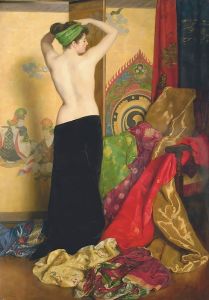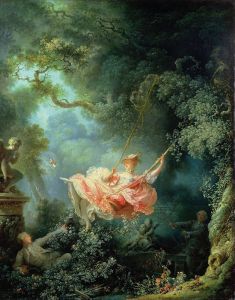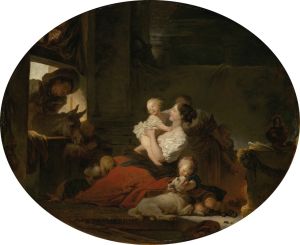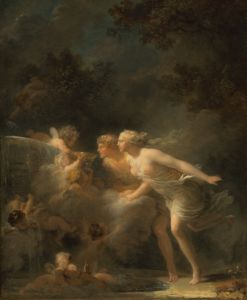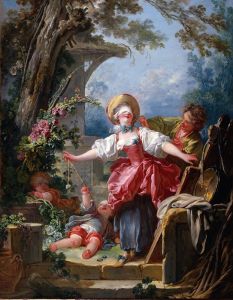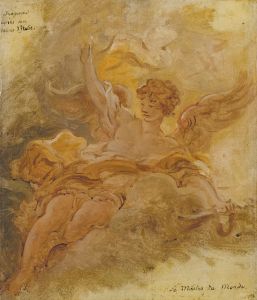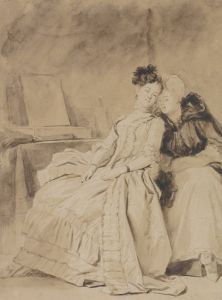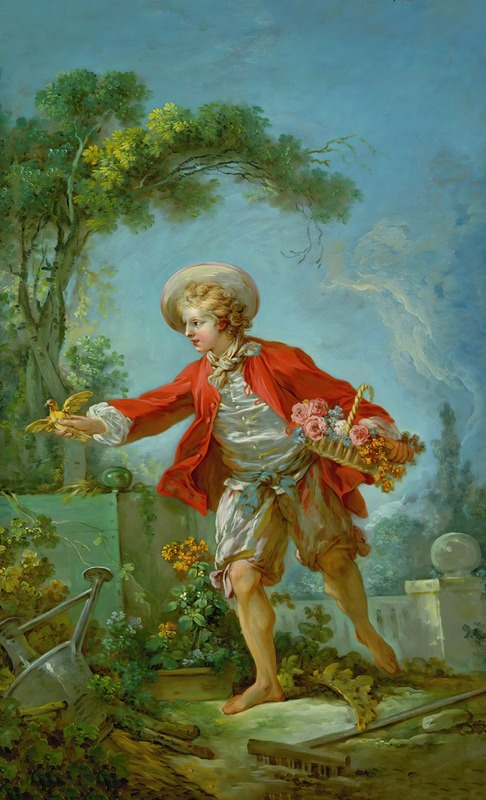
The Gardener
A hand-painted replica of Jean-Honoré Fragonard’s masterpiece The Gardener, meticulously crafted by professional artists to capture the true essence of the original. Each piece is created with museum-quality canvas and rare mineral pigments, carefully painted by experienced artists with delicate brushstrokes and rich, layered colors to perfectly recreate the texture of the original artwork. Unlike machine-printed reproductions, this hand-painted version brings the painting to life, infused with the artist’s emotions and skill in every stroke. Whether for personal collection or home decoration, it instantly elevates the artistic atmosphere of any space.
Jean-Honoré Fragonard's painting "The Gardener" is a notable work by the French Rococo artist, who is renowned for his lively and playful compositions. Fragonard, born in 1732 in Grasse, France, was a prolific painter whose career spanned the latter half of the 18th century. He is best known for his exuberant and sensual paintings, often depicting scenes of romance and leisure.
"The Gardener" exemplifies Fragonard's mastery in capturing the essence of the Rococo style, characterized by its lightness, elegance, and use of soft colors. Although specific details about the painting's creation, such as its exact date, are not well-documented, it is consistent with the themes and techniques prevalent in Fragonard's body of work during the height of his career.
In "The Gardener," Fragonard employs a delicate palette and fluid brushwork to bring the scene to life. The painting likely portrays a gardener amidst a lush, verdant setting, reflecting the artist's fascination with nature and the pastoral ideal. This theme was common in Rococo art, which often celebrated the beauty and tranquility of the natural world.
Fragonard's technique in "The Gardener" demonstrates his skillful use of light and shadow to create depth and dimension. The soft, diffused lighting typical of his work adds a dreamlike quality to the scene, inviting viewers into a serene and idyllic world. The composition is likely to be dynamic yet balanced, a hallmark of Fragonard's ability to convey movement and harmony within his paintings.
The Rococo period, during which Fragonard created "The Gardener," was a time of artistic exploration and innovation in France. Artists of this era often focused on themes of pleasure, love, and nature, moving away from the grand historical and religious subjects that dominated the Baroque period. Fragonard, along with contemporaries like François Boucher, played a significant role in defining the Rococo aesthetic, which emphasized ornate detail and playful subject matter.
Fragonard's work, including "The Gardener," was highly regarded by patrons of the time, particularly among the French aristocracy who favored the Rococo style for its elegance and charm. His paintings were often commissioned for private collections, reflecting the tastes and interests of the elite class.
Despite the lack of specific information about "The Gardener," the painting remains an important example of Fragonard's contribution to the Rococo movement. His ability to capture the beauty and whimsy of everyday life continues to be celebrated, and his works are held in high esteem in museums and galleries worldwide.
In summary, "The Gardener" by Jean-Honoré Fragonard is a testament to the artist's skill and the Rococo style's enduring appeal. Through his use of color, light, and composition, Fragonard creates a scene that is both enchanting and reflective of the artistic trends of 18th-century France.






